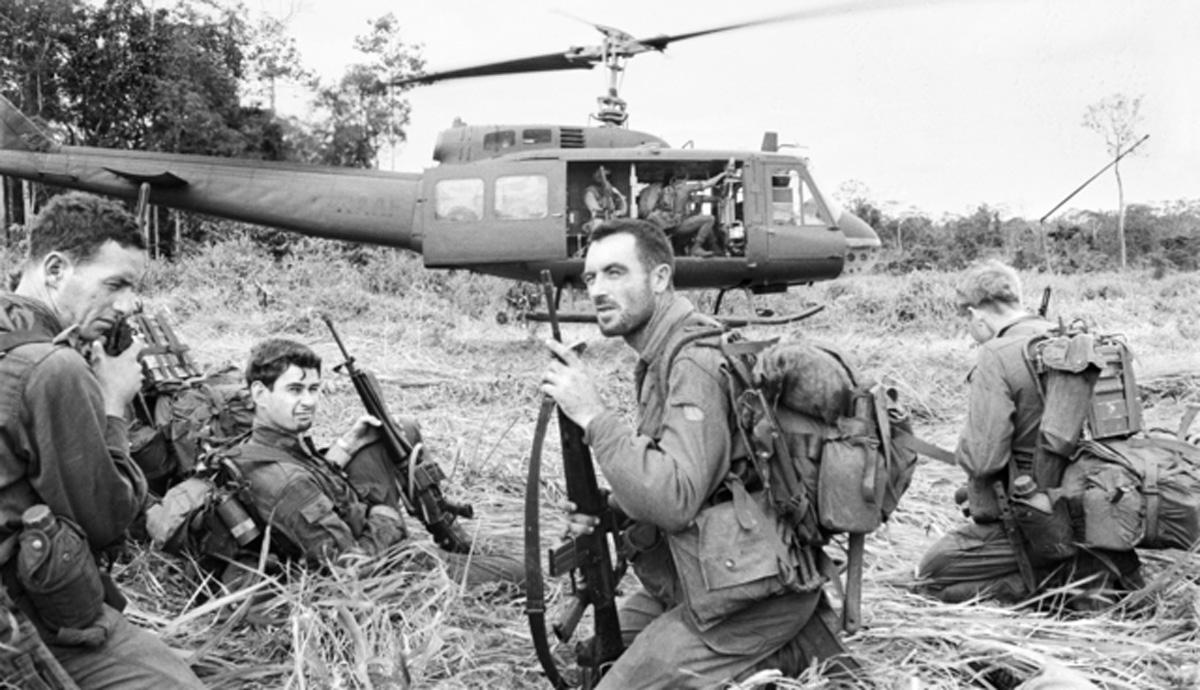March 1, 2016
Vietnam War hard on conscripts ‘who drew the card’
A study of the long-term health effects on Australians conscripted to serve in the Vietnam War has debunked perceptions of widespread cancer and death rates among veterans.
The study, led by Associate Professor Peter Siminski from UOW's Faculty of Business, confirms that National Service conscripts have suffered increased levels of psychological trauma and hearing damage throughout their lives following the war.
It is the first Australian study of its kind to take a long-term view of the health effects on Australian soldiers who served in Vietnam.
Despite the many studies into the subject, the challenge of accessing detailed data on health outcomes and finding an appropriate comparison group has led to ongoing uncertainty and concrete evidence about the health impacts of the war.
The results confirm the anecdotal evidence from veterans that post-traumatic stress disorder and other mental health issues plagued them for years following their deployment.
The research analysed data on deaths, cancer diagnoses and hospital presentations using comprehensive administrative data, as well as physical and mental health from a large-scale population health and wellbeing survey.
Professor Siminski, with co-authors David Johnston and Michael Shields from the Monash University Centre for Health Economics, used a novel approach that is similar to the randomised controlled trials commonly found in medical studies that allowed him to compare ‘apples with apples’.
Drawing on the random nature of the national service conscription lotteries instituted by the Menzies Government in the mid-1960s, the researchers compared the long-term health outcomes of all men who were ‘balloted in’ to all men who were ‘balloted out’.
Between 1965 to 1972, close to 804,000 young men were registered for conscription ballots at age 20. A lottery-style barrel draw determined the birth dates for those to be enlisted.
Through the 15 lotteries held twice a year, 63,735 men were conscripted to army service, with 19,450 serving in Vietnam.
Almost half (42 per cent) of men balloted-in were rejected for health and medical reasons, while others deferred call-up because they were students or apprentices and a small number were exempted as conscientious objectors.

The national service conscripts, or “nashos” as they were known, served alongside regular soldiers in infantry battalions, making up about 40 per cent of the numbers in frontline rifle companies.
There they engaged in counter-insurgency tactics in Phuoc Tuy province, where they lived with the threat of direct combat as well as the psychological burden from the fear of wounding or death from landmines and booby-traps.
Of the 500 Australians killed in Vietnam, 198 were national servicemen.
The impact of the Vietnam War on young men was pushed into the public awareness through the classic Australian song, ‘I Was Only 19’, by folk group Redgum.
It detailed in a first-person account the experience and suffering experienced by many Vietnam War veterans, encapsulated in the lines: “And can you tell me, doctor, why I still can't get to sleep? And why the Channel Seven chopper chills me to my feet?”
“The danger of the unknown was always in the back of these soldiers’ minds,” Professor Siminski said. “Even if they weren’t physically injured many were left traumatised by their experiences.
“This has led to much uncertainty about the long-term health effects of Vietnam War veterans because, despite the large body of research, there are mixed findings due to availability of data or the problem of comparing the long-term health of a deployed soldier with the general population.”
Professor Siminski said that with Vietnam veterans now aged in their 60s and 70s, there was added urgency to better understand their health outcomes to be able to provide the appropriate nature and level of health care and welfare services.
“The research not only contributes to our historical understanding of the Vietnam War era, it also helps us count the full costs to society of army service and of entering into combat and understanding the human consequences of conflict.”
The study was published recently in the Journal of Health Economics.
Photo at top of page: Major Graham Chapman, (right), waits with his troops from 7th Battalion, The Royal Australian Regiment (7RAR), during Operation Santa Fe, for a lift in an Iroquois helicopter from No. 9 Squadron, Royal Australian Air Force (RAAF). Original photo by Michael Coleridge. (Credit: Australian War Memorial COL/67/1128/VN, republished under Creative Commons BY-NC)
